Search Intent Optimisation (SIO)
Search Intent Optimisation doesn’t replace SEO — it refines it.
If you’re tired of:
- ❌ Traffic that never converts
- ❌ Keyword-stuffed waffle
- ❌ Pages that rank but bring no enquiries
Then it’s time to focus your website around people — not just algorithms.
Let’s make your content work properly: attract, inform, and convert.

Frustrated by Rankings That Don’t Deliver? You Probably Need SIO
If your site ranks but the phone stays quiet, the issue isn’t “more SEO” — it’s misaligned intent. We realign your pages with what real customers expect to find at that stage of their journey.
- Answer the questions customers actually ask
- Match content to intent at each step (learn → compare → hire)
- Guide visitors smoothly from search to enquiry
Result: fewer bounces, better leads, stronger ROI.
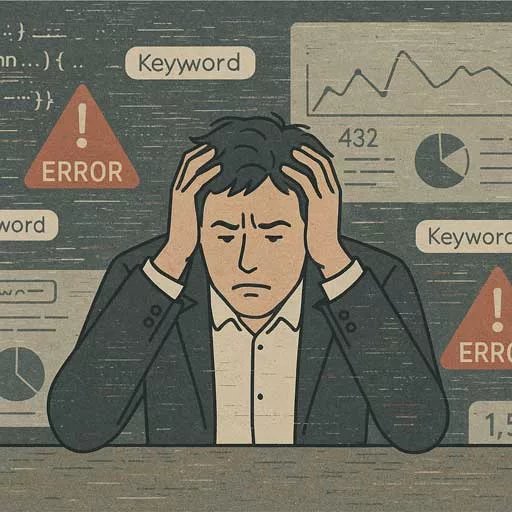
Why SEO Alone Isn’t Enough Anymore
Traditional SEO can still get you seen — but visibility isn’t the same as results. If the wrong people click, they bounce, and Google takes note. Even the best technical SEO can’t fix poor intent targeting.
- Ranking for irrelevant terms wastes money
- Generic copy kills trust and conversions
- High-traffic pages with no engagement hurt sitewide performance
SIO fixes that — connecting the right audience with the right content, at the right time.
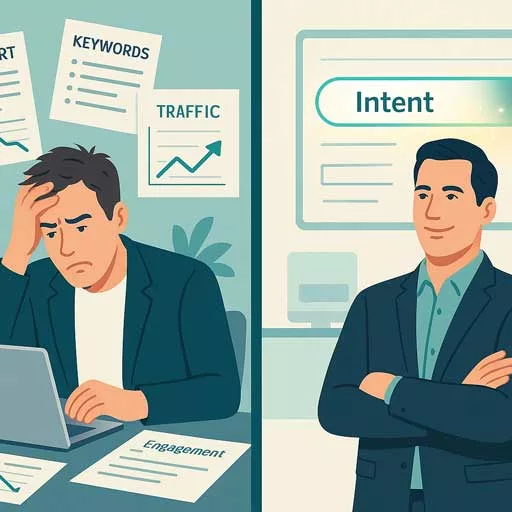
SIO — The Missing Piece in Your SEO Puzzle
You’ve invested in SEO, design, maybe even ads. But if search intent isn’t aligned, everything leaks leads. Search Intent Optimisation is the piece that locks it all together.
- SEO gets you seen
- Design builds trust
- Ads drive quick attention
- SIO turns visibility into customers
Without it, your marketing engine misfires. With it, everything clicks.
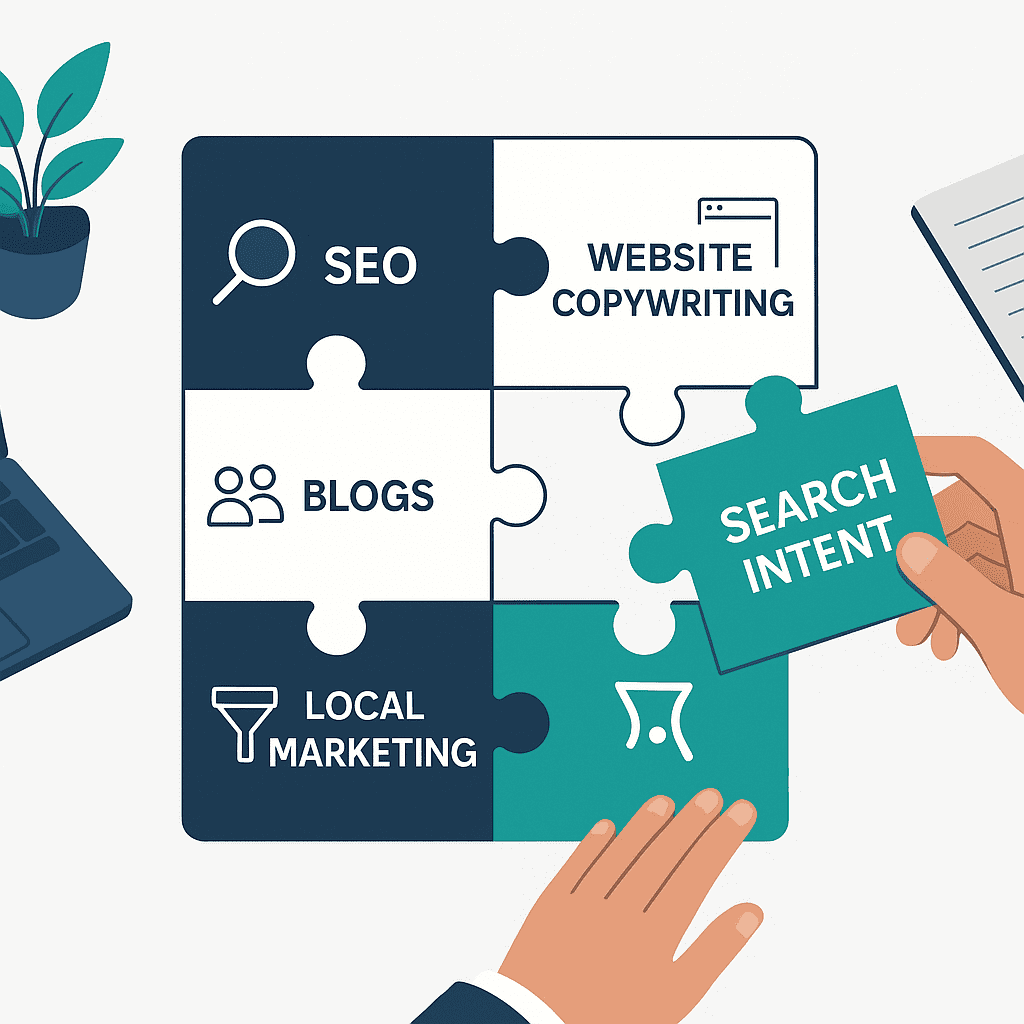
Frequently Asked Questions About Search Intent Optimisation
Every Google search has an intent behind it — to learn, compare, or take action. Understanding that intent is how we make SEO actually work for your business.
What is informational intent?
Informational intent is when someone’s looking to understand — not purchase. Their goal is to learn, research, or explore a topic, rather than hire a service or buy a product (yet).
People with informational intent might be:
- Looking for practical advice or how-to instructions
- Trying to solve a specific problem
- Comparing approaches or methods
- Seeking general information before taking action
Example search: “What causes damp in old houses?”
At this stage, users aren’t ready to convert — but they’re building the knowledge that leads to future decisions. The goal is to become their trusted source before they even realise they need your service.
What to offer:
- Helpful blog posts that answer real-world questions
- Step-by-step how-to guides
- Simple explainers written in plain English
- FAQ sections that address common concerns
Pro tip: Optimise for featured snippets by structuring answers clearly, using bullet points, and giving the direct answer near the top of your content.
What is navigational intent?
Navigational intent is when a user already knows who they’re looking for — they’re simply using Google to get there faster. It’s less about discovery and more about direction.
People with navigational intent may be:
- Looking for a specific brand or service provider
- Trying to log in to an account or dashboard
- Searching for a branded product or support page
- Trying to avoid typing a full URL
Example search:
“British Gas boiler repair contact number”
At this stage, users aren’t exploring options — they already have you in mind. Your job is to make sure they land on the right page quickly.
What to offer:
- A well-optimised homepage with clear brand signals
- Branded service or login pages with accurate titles and meta descriptions
- Structured navigation that helps users find what they need in one click
- Internal links from your blog and FAQs pointing to key pages
Pro tip:
Include your brand name in title tags, headings, and URLs where relevant — and keep your Google Business Profile updated for branded searches.
What is commercial intent?
Commercial intent describes users in research mode — they’re actively comparing options before making a decision. They’re not quite ready to buy, but they’re close. This is a high-stakes stage where clear, credible content can persuade them to choose you.
People with commercial intent may be:
- Comparing providers, features, or pricing
- Looking for reviews or testimonials
- Evaluating value for money
- Exploring the benefits of one service over another
Example search:
“Best SEO agency for small businesses UK”
At this stage, users want reassurance — not a hard sell. They’re looking for proof, clarity, and confidence before they commit.
What to offer:
- Honest comparison pages (even if competitors are mentioned)
- Case studies and customer reviews with real results
- Transparent service breakdowns and pricing guides
- Benefit-led blog posts and landing pages that highlight value
Pro tip:
Use terms like “vs,” “best,” and “top” naturally in your content. Structure pages for snippet eligibility using bullet points, FAQs, or comparison tables.
What is transactional intent?
Transactional intent describes users who are ready to act — whether that’s buying, booking, calling, or submitting an enquiry. They’ve done their research, they know what they want, and they’re looking for the fastest route to getting it.
People with transactional intent may be:
- Ready to make a purchase
- Looking to book a service immediately
- Searching for a contact form or phone number
- Trying to complete a task with minimal friction
Example search:
“Book emergency plumber in Sheffield”
At this stage, any delay or distraction can cost you the sale. Your content should remove barriers and make it as easy as possible to convert.
What to offer:
- Dedicated landing pages for each service, location, or product
- Clear, compelling calls to action (e.g. “Call Now”, “Book Today”, “Get a Quote”)
- Prominent contact forms, phone numbers, or booking buttons
- Fast-loading, mobile-friendly layouts with zero distractions
Pro tip:
Use action-based keywords in meta titles and headings (e.g. “Book an Emergency Plumber in Sheffield – 24/7 Response”) and add structured data to improve visibility in local and service-intent results.
Example 1 — Plumber in Leeds
Old SEO:
“Emergency Plumber Leeds” jammed into every line. Generic content, no urgency, no trust, no calls.
SIO Approach:
We rebuild the page around what the customer’s really asking:
- “How fast can you get here?”
- “Do you charge callout fees?”
- “Can you fix a burst pipe tonight?”
We add genuine trust signals (local reviews, emergency availability) and clear calls to action like:
“Call Now – We’re in Leeds and Can Be There in 30 Minutes.”
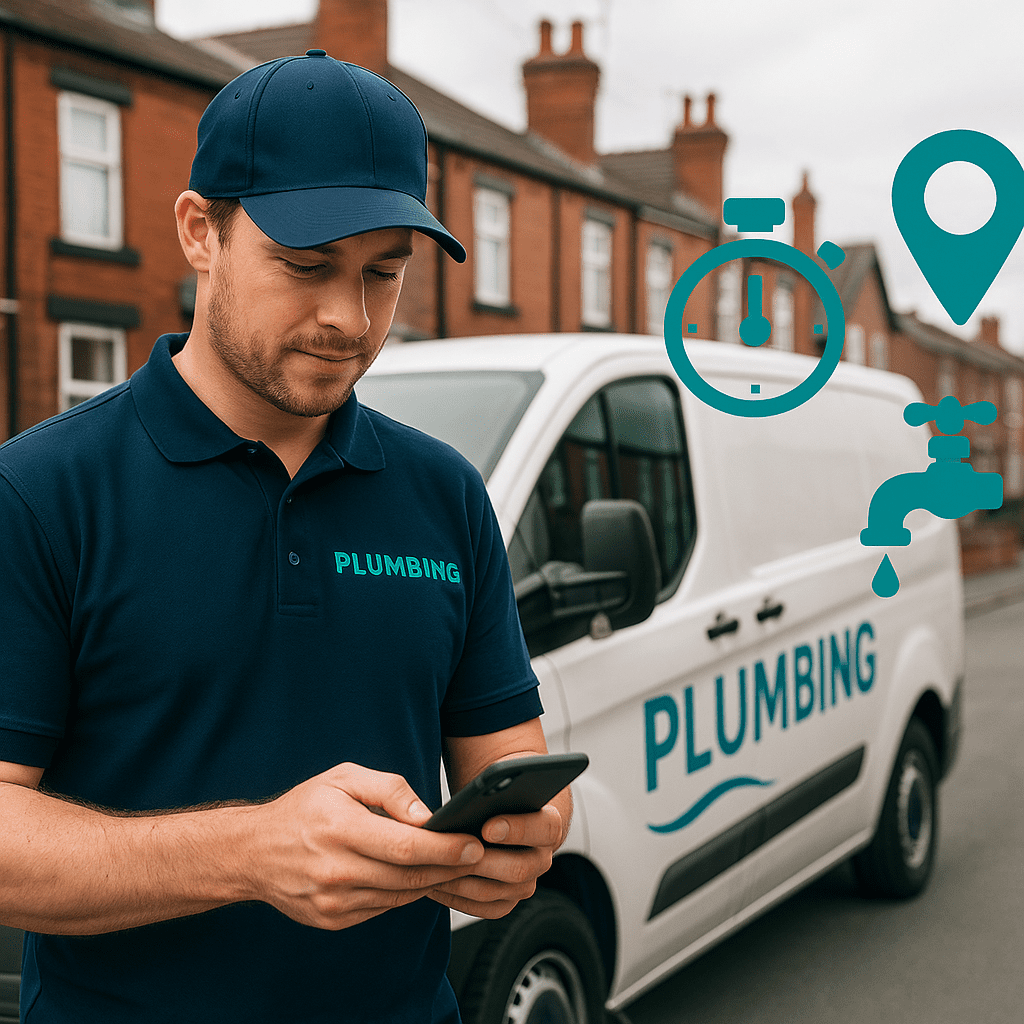
Example 2 — Online Fitness Coach
Old SEO:
“Online fitness coaching UK” repeated in every other line. Bland content, no authority, no conversions.
SIO Approach:
We create posts and landing pages that answer real search intent:
- “What’s the best workout for beginners?”
- “How do I stay motivated without a gym?”
- “Is online coaching worth the money?”
We build trust with useful answers, genuine client stories, and strong CTAs like:
- “Download My Free 7-Day Starter Plan”
- “Book a Free Consultation Call”
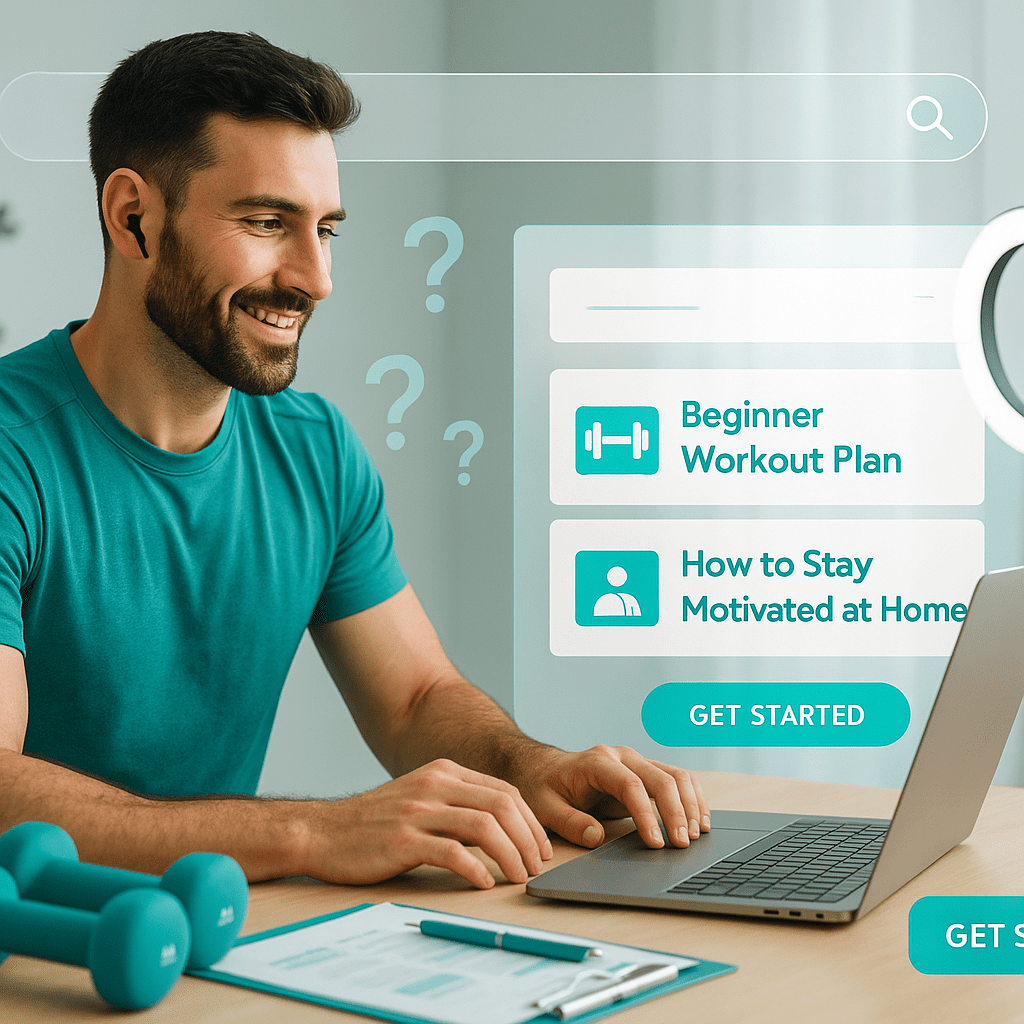
Where Search Intent Optimisation Fits in Your Marketing Strategy
Search Intent Optimisation (SIO) is SEO with purpose. It doesn’t replace the basics — it refines them. Instead of chasing clicks, it connects with customers at every step of their journey.
It enhances:
- Local SEO by aligning with real, location-specific intent.
- Website copywriting by improving clarity, trust, and conversions.
- Blog strategy by turning everyday content into long-term traffic assets.
- Landing pages by answering what your audience is actually thinking — not just what you hope they’ll search for.
SIO makes your marketing work harder, last longer, and convert better — without extra spend.
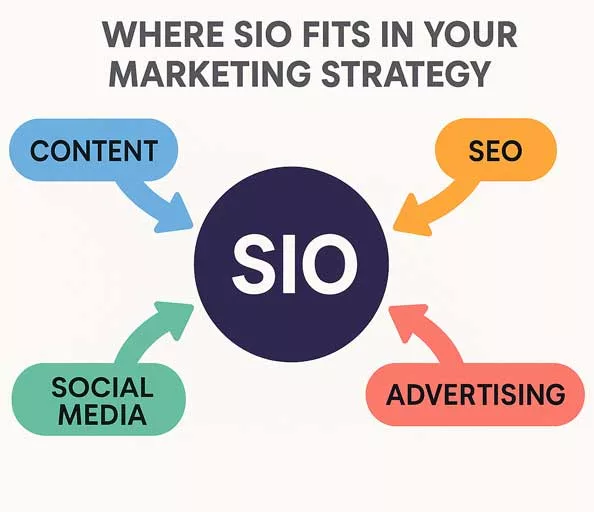
Ready to Shift from SEO to SIO?
If you’re ready to stop chasing clicks and start converting customers, it’s time to optimise your site for Search Intent Optimisation.
See How SIO Can Work For YouFurther Reading & SEO Services
Learn more about SEO and SIO with these resources:
- 📘 Search Intent Optimisation Explained
- 📘 Complete SEO Guide for UK Small Businesses
- 📘 How Blogging Improves SEO in the UK
- 📘 10 Ways to Boost SEO Without Overspending
Explore Our SEO Services
- 🔧 SEO for Construction & Trades
- 🍴 SEO for Hospitality & Tourism
- 🏭 SEO for Industry & Engineering
- 💻 Local SEO Services
🔗 For more insights, see Google’s official SEO Starter Guide.
